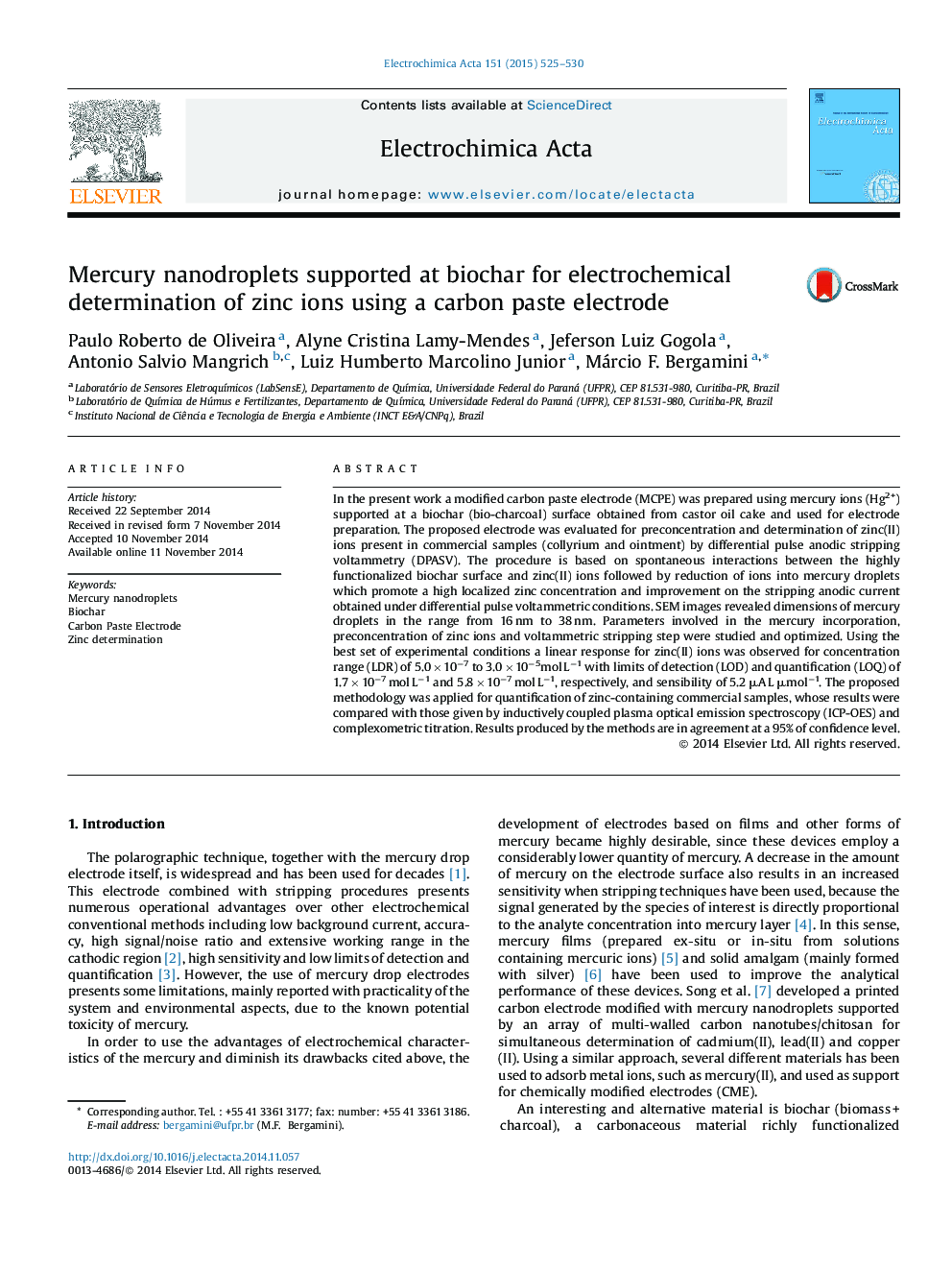| Article ID | Journal | Published Year | Pages | File Type |
|---|---|---|---|---|
| 184869 | Electrochimica Acta | 2015 | 6 Pages |
•A new voltammetric procedure for preparation of mercury nanodroplets to sensor construction.•Low cost and easy preparation of voltammetric sensors using a small amount of mercury ions.•High analytical performance of Biochar/mercury based electrode applied for construction of electroanalytical sensor.•Excellent analytical performance: low limit of detection, high sensitivity and stability of the proposed sensor.
In the present work a modified carbon paste electrode (MCPE) was prepared using mercury ions (Hg2+) supported at a biochar (bio-charcoal) surface obtained from castor oil cake and used for electrode preparation. The proposed electrode was evaluated for preconcentration and determination of zinc(II) ions present in commercial samples (collyrium and ointment) by differential pulse anodic stripping voltammetry (DPASV). The procedure is based on spontaneous interactions between the highly functionalized biochar surface and zinc(II) ions followed by reduction of ions into mercury droplets which promote a high localized zinc concentration and improvement on the stripping anodic current obtained under differential pulse voltammetric conditions. SEM images revealed dimensions of mercury droplets in the range from 16 nm to 38 nm. Parameters involved in the mercury incorporation, preconcentration of zinc ions and voltammetric stripping step were studied and optimized. Using the best set of experimental conditions a linear response for zinc(II) ions was observed for concentration range (LDR) of 5.0 × 10−7 to 3.0 × 10−5mol L−1 with limits of detection (LOD) and quantification (LOQ) of 1.7 × 10−7 mol L−1 and 5.8 × 10−7 mol L−1, respectively, and sensibility of 5.2 μA L μmol−1. The proposed methodology was applied for quantification of zinc-containing commercial samples, whose results were compared with those given by inductively coupled plasma optical emission spectroscopy (ICP-OES) and complexometric titration. Results produced by the methods are in agreement at a 95% of confidence level.
Graphical abstractFigure optionsDownload full-size imageDownload as PowerPoint slide
